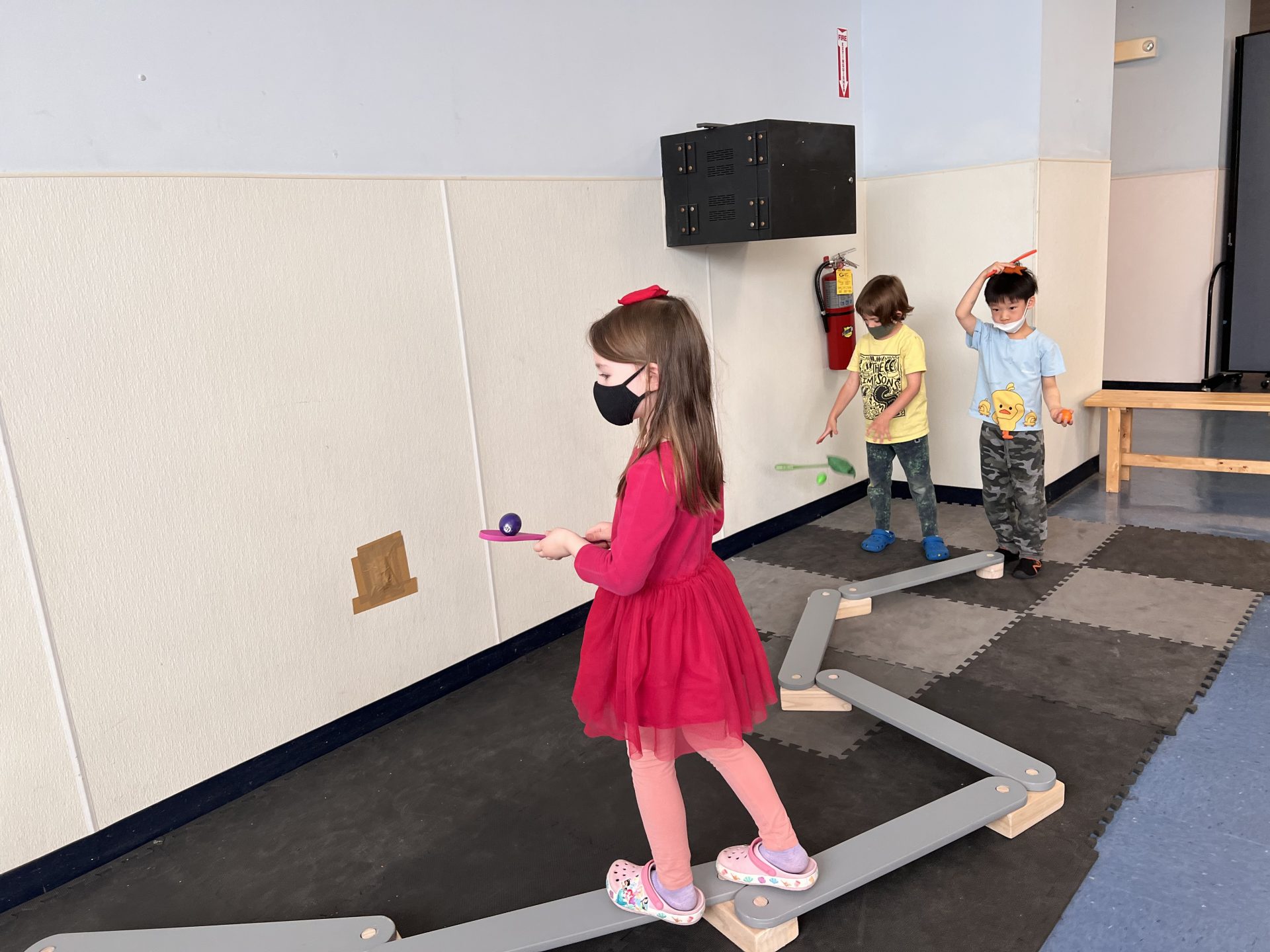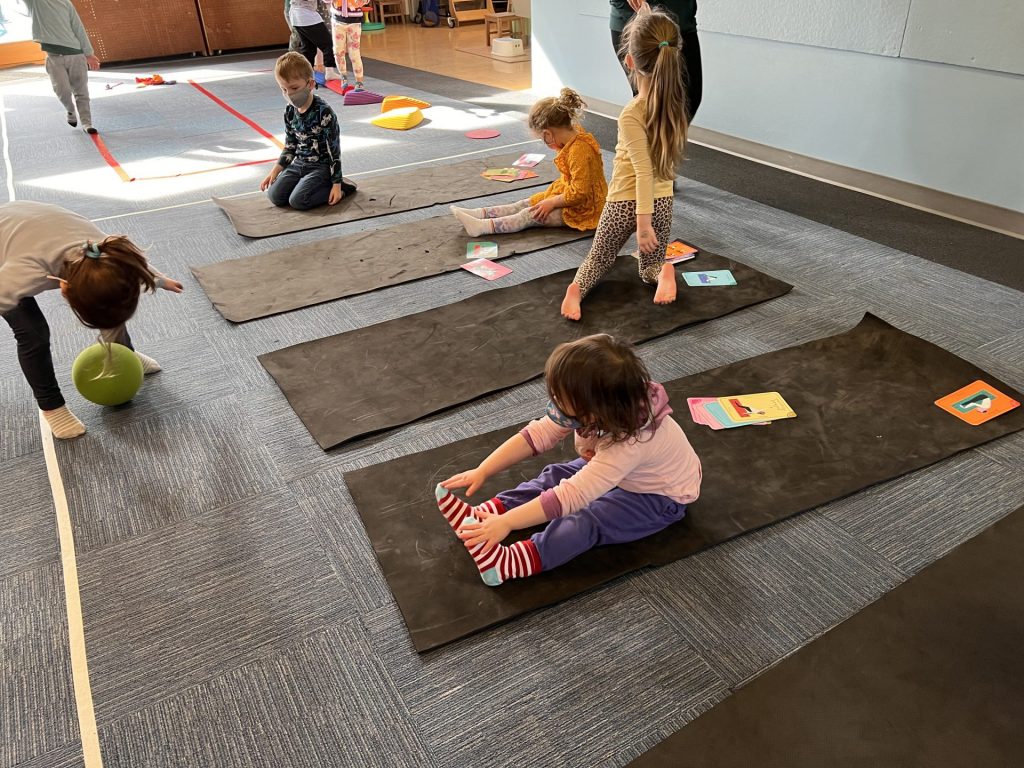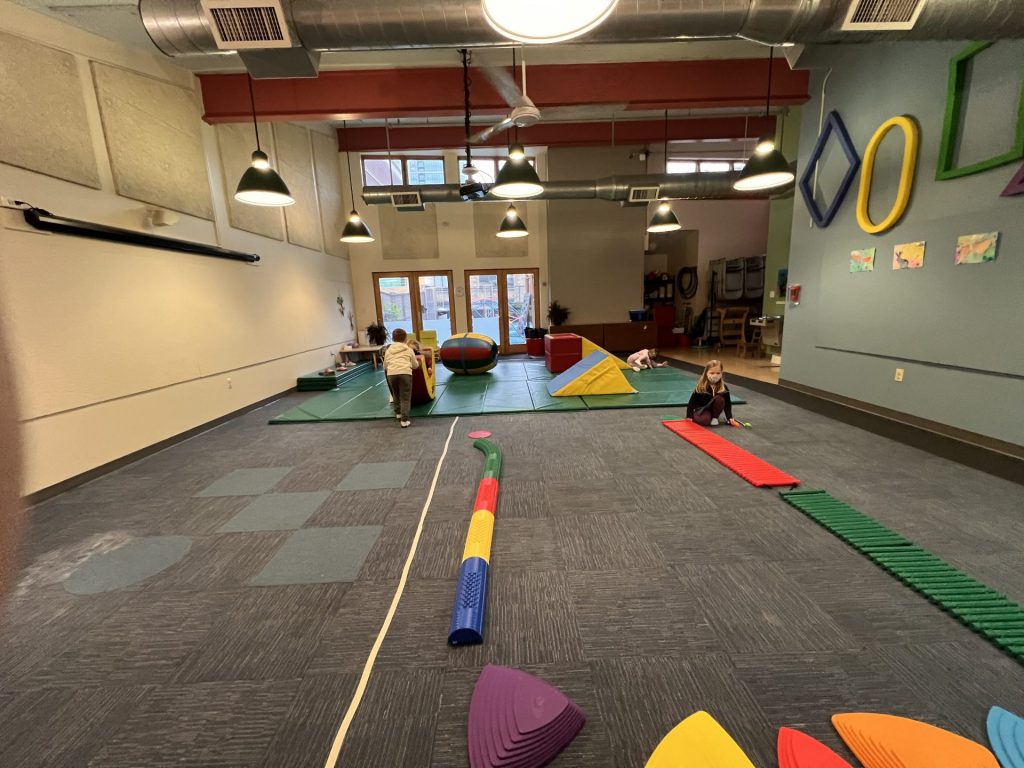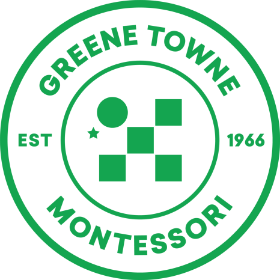Fundamental Locomotor and Non-Locomotor Movement Skills
Hello everyone! This month we continue our discussion of the key terms of the movement curriculum and how they show up in class. I hope this also gives you some insight into how we build upon these skills month to month to facilitate the growth and development of these skills for your children. If your […]

Hello everyone! This month we continue our discussion of the key terms of the movement curriculum and how they show up in class. I hope this also gives you some insight into how we build upon these skills month to month to facilitate the growth and development of these skills for your children.
If your child is in Primary, you will recognize these terms from the movement class conference forms that were sent out the past couple of months, and note that they were a big focus within the form. If your child is in Toddler, hopefully this blog provides some information on how the curriculum coincides with your children’s development.
Before getting into more detail, I would like to remind you of the glossary definitions of these terms that were provided in one of the very first movement blogs.
- Fundamental Locomotor Skills: Skills allowing us to move from space to space that adequately prepare children for the more complex skills they will encounter as they get older and participate in recreational activities. For example, walking, running, jumping, hopping, skipping, galloping, leaping, and sliding.
- Fundamental Non-Locomotor Skills: Skills that can be done standing in one spot and prepare us to keep our balance in between transitioning from shape to shape. For example, stretching, balancing, twisting, bending, turning, and swinging.
As you may note, Fundamental Locomotor Movement Skills are all Gross Motor Skills, i.e. skills that require whole body movement. These two categories go hand-in-hand, with fundamental locomotor movement skills being the gross motor skills that set a child up for an ability to both learn and participate in a myriad of group sports, physical activities, or games with ease.
There are a variety of ways that we encourage and target practice the development of these skills in the movement classroom, though they are at work all the time.
We always begin class with a cardiovascular warm-up that enables us to focus on each of these skills individually. Sometimes it is teacher led, where I call out skills to practice, other times, I might call on the children to take a turn leading the activity. I change it up each week by adding different music, equipment, or even sometimes utilizing movement cue cards that signal what the children can practice next. For toddlers, this is sometimes a guided music activity, where the children listen for cues in the music to tell them when to practice each skill.
Another method of practice is through relay races and skills courses. We utilize these activities to encourage building strength in the muscle groups that make performing these skills easier. As they climb, hop, balance, and run, they are building the core, lower and upper body strength needed to perform these skills with more ease.
And finally, we play games to encourage agency of movement choices. It is one thing to know the skill, but another to be able to call upon it when needed to navigate one’s way through space during a large group activity. Providing an opportunity for the practice of this at the end of class gives the children a chance to call upon each movement when the practice of it is still fresh in their mind.

The main focus for Fundamental Non-Locomotor Movement Skills comes into play during our practice of yoga within each day’s lesson plan. I have found this to be a very effective manner of encouraging children’s understanding and performance of cross-lateral movements and balance needed to perform all of the fundamental non-locomotor skills.
Children sometimes replicate these poses from teacher or peer demonstration, and sometimes through looking at yoga cards that we utilize in small-group station work. As we go about either method, I encourage self-correction before providing assistance, in hopes that the children begin to develop the proprioceptive awareness needed to kinesthetically understand where their bodies are in space versus what the pose is asking from them.

I like to focus on these skillsets as a whole, rather than individual entities, as I believe practice of both of them simultaneously to be essential to the gross motor development of the child holistically. Thus, they are practiced in tandem with one another, through each activity in class, as to allow them to grow collectively for the children.
Thanks for reading, and stay tuned for next month’s focus, Object Control.
-Ms. Jena
Parent Education Video Rewind – Child Development Through Play: Toys, Sharing, Friendships and Risks
Read More




